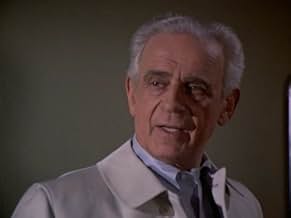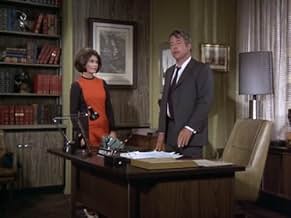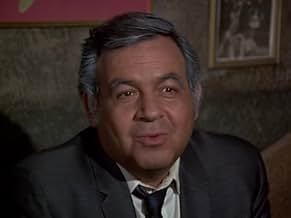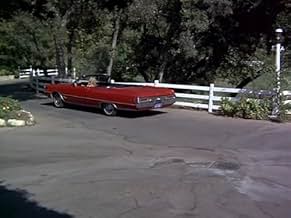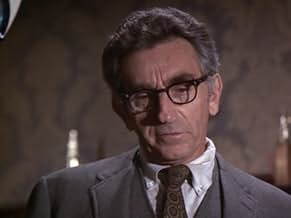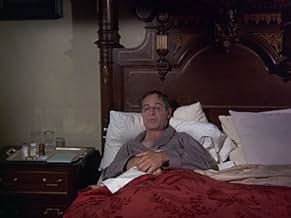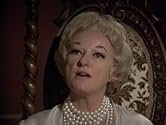Rod Serling presents tales of horror illustrated in various paintings.Rod Serling presents tales of horror illustrated in various paintings.Rod Serling presents tales of horror illustrated in various paintings.
- Nominated for 2 Primetime Emmys
- 2 wins & 4 nominations total
Browse episodes
Featured reviews
Rod Serlings follow up to Twilight Zone. This series originally began as a four in one alternating with three other shows and each would get one airing per month. Night Gallery was easily the best and became a weekly. While Twilight Zone dealt with Science Fiction Gallery dealt on the macabre horror side. Rod as host would introduce each story via a painting.
A few (mostly the short ones) had tongue in cheek humor. The others could be very spooky. The theme music was equally eerie. The show now airs on the Sci-Fi channel. Having watched it when it originally aired it seems that the episodes are edited here and there. Later episodes were added from another series entitled The Sixth Sense and they were not nearly as good as the Serling ones.
A few (mostly the short ones) had tongue in cheek humor. The others could be very spooky. The theme music was equally eerie. The show now airs on the Sci-Fi channel. Having watched it when it originally aired it seems that the episodes are edited here and there. Later episodes were added from another series entitled The Sixth Sense and they were not nearly as good as the Serling ones.
10sskelton
Often lost in the shadow of Rod Serling's first series, "The Twilight Zone," "Night Gallery" was a fascinating experiment in the anthology format. Instead of one story per episode, the hour was splintered into two, three, or four different stories of varying length. Some were quite brief, lasting no more than a minute; others lasted over 40 minutes. The quality often varied, too. A few of the little vignettes were quite bad. Some stories were quite good. And on more than a few occasions, this little mini-film festival on Wednesday nights produced segments that were as good as anything else on TV at the time. Classic episodes included "They're Tearing Down Tim Riley's Bar," "Pickman's Model" (both nominated for Emmys), "The Caterpillar," "Class of '99," "Green Fingers," "The Messiah on Mott Street," "The Sins of the Fathers," "The Doll," "Cool Air," "Silent Snow, Secret Snow," "A Question of Fear," "The Little Black Bag," and "The Dead Man." Because one of these classics could often be followed or preceded by a story of lesser quality, the series got a reputation for being wildly uneven. It was universally lambasted during its network run by near-sighted critics who were thrown off by its inconsistency, and missed the quality elements: intelligent, stylish writing by Serling and others, top-notch production values (particularly in cinematography and music), and innovative directorial touches. For its syndication run, the series segments were butchered to fit into a half-hour time slot, some losing half their length in the editing, and is a travesty, a mere shadow of its former self. Episodes of a boring ESP potboiler, "The Sixth Sense," were annexed into the syndie package with terrible results. Stick to the uncut version.
The Night Gallery was Rod Serling introducing tales of terror and irony much like he did for the Twilight Zone. While the TZ dealt more with Sci-Fi, Night Gallery dealt with the macabe. Damn, was it good and scary. The stories that stood out in my mind were the Tune In Dan's Cafe, Green Fingers and They're Aren't Anymore McBanes. Talk about scary. I remember watching the McBanes episode and it scared the daylights out of me and my mother who was watching it with me. The TUne in Dan's Cafe is very haunting. To me this is one of the best anthology shows ever, ranking up there with the Outer Limits(the original) Tales From the Darkside, One Step Beyond, and the great Twilight Zone. I love the fact that the Sci-Fi channel runs Twilight Zone episodes back to back in front of the older Outer Limits episodes. Now if only it would add the Night Gallery all would be perfect in the afternoon. The Night Gallery is classic horror anthologies at their best. Great acting, great stories, scary as hell. Pass the popcorn and get ready for some real chills. way to go Rod Serling another classic show.
There is something that sets Night Gallery apart from all other sci-fi/thriller TV shows. An ethereal element of mystique lurks within every episode that provides for unique entertainment. Narrated by Rod Serling, Night Gallery explores the supernatural from the context of an abstract painting--a different painting each episode. When narrating his previous series, The Twilight Zone, Serling generally manifested an air of superiority to the plot--like he had it in the palm of his hand and could control it. In Night Gallery, however, he relinquishes such control and becomes more a PART of the madness; as if the gallery is controlling HIM (it is also refreshing to finally view him in color). Night Gallery episodes are NOT concluded with a Serling anecdotal summary; instead, a shocking punch is usually delivered that the viewer is left to unravel without assistance.
The directing and editing are top notch. Scenes cascade in a swift and somewhat ambiguous fashion, and camera tricks are cleverly exploited to hold our attention--proving that today's computer graphics are not essential to exact viewer interest. Simple story lines are translated into convoluted journeys of intrigue with music and sound effects akin only to The Exorcist.
Some memorable episodes include Sally Field playing a woman with multiple personalities (this was before she played Cybil, mind you); an ostracized young girl who befriends a seaweed monster; a diner jukebox that hauntingly plays only one song; a man who has an earwig planted in his ear that creeps through his brain (and lays eggs!); and a young Clint Howard (Ron's kid brother) playing a child prodigy who foresees mankind's treacherous fate.
Of course, there are those little, campy vignettes thrown in for fun, most of which are mildly amusing. Overall, this is an exhibit you will not want to bypass!
The directing and editing are top notch. Scenes cascade in a swift and somewhat ambiguous fashion, and camera tricks are cleverly exploited to hold our attention--proving that today's computer graphics are not essential to exact viewer interest. Simple story lines are translated into convoluted journeys of intrigue with music and sound effects akin only to The Exorcist.
Some memorable episodes include Sally Field playing a woman with multiple personalities (this was before she played Cybil, mind you); an ostracized young girl who befriends a seaweed monster; a diner jukebox that hauntingly plays only one song; a man who has an earwig planted in his ear that creeps through his brain (and lays eggs!); and a young Clint Howard (Ron's kid brother) playing a child prodigy who foresees mankind's treacherous fate.
Of course, there are those little, campy vignettes thrown in for fun, most of which are mildly amusing. Overall, this is an exhibit you will not want to bypass!
Everyone knows the genius of Rod Serling's science fiction, suspense series, THE TWILIGHT ZONE. NIGHT GALLERY was a different sort of series, bringing horror to the small screen. Stories by the likes of H.P. Lovecraft, Richard Matheson, and Robert Bloch were presented weekly, in a macabre art museum setting. Serling himself was the "curator" / host. Each episode was like a mini-feature film. There was great care and quality involved.
The reason this show never reached the same stellar status that TTZ did is easy to discern. While the first season is filled with many classic episodes featuring supernatural, sometimes surreal tales, studio meddling and economic pressures doomed the later seasons to a more conventional TV hell.
The network -obviously- was only concerned with better ratings / profit, so, it demanded shorter segments, more "accessible" stories, and, of course, comedy. Serling, being the eternal iconoclast, hated this nonsense, but had no real choice. If it had all been done his way, without the tampering, NIGHT GALLERY would have been a horror masterpiece. As it stands, it has the first season of brilliance, followed by a second decent season, and a third that is hit and miss. Still, this show was unique, and even its worst episodes were better than most of the rubbish on TV...
The reason this show never reached the same stellar status that TTZ did is easy to discern. While the first season is filled with many classic episodes featuring supernatural, sometimes surreal tales, studio meddling and economic pressures doomed the later seasons to a more conventional TV hell.
The network -obviously- was only concerned with better ratings / profit, so, it demanded shorter segments, more "accessible" stories, and, of course, comedy. Serling, being the eternal iconoclast, hated this nonsense, but had no real choice. If it had all been done his way, without the tampering, NIGHT GALLERY would have been a horror masterpiece. As it stands, it has the first season of brilliance, followed by a second decent season, and a third that is hit and miss. Still, this show was unique, and even its worst episodes were better than most of the rubbish on TV...
Did you know
- TriviaArtist Thomas J. Wright painted all of the paintings used to introduce each story.
- Quotes
Rod Serling: For those of you who've never met me, you might call me the under-nourished Alfred Hitchcock.
- Alternate versionsMajor changes were made to most episodes for syndication. The 60-minute episodes were edited down to 30 minute packages, with major edits to some of the 30-40 minute segments of the original shows. In cases of segments that were only 15-20 minutes in length, these were padded out by adding stock footage, newly shot scenes, and footage from Hollywood movies such as Silent Running (1972) and Fahrenheit 451 (1966). Most musical cues were also replaced for syndication. In order to augment "Night Gallery"'s syndicated run, episodes of The Sixth Sense (1972) were edited down to 30 minutes, had new introductions by Rod Serling tacked on, and were added to the syndicated run of "Night Gallery."
- ConnectionsEdited from Four-in-One (1970)
- How many seasons does Night Gallery have?Powered by Alexa
Details
- Release date
- Country of origin
- Language
- Also known as
- Rod Serling's Night Gallery
- Filming locations
- Production company
- See more company credits at IMDbPro
- Runtime50 minutes
- Sound mix
- Aspect ratio
- 1.33 : 1
Contribute to this page
Suggest an edit or add missing content



